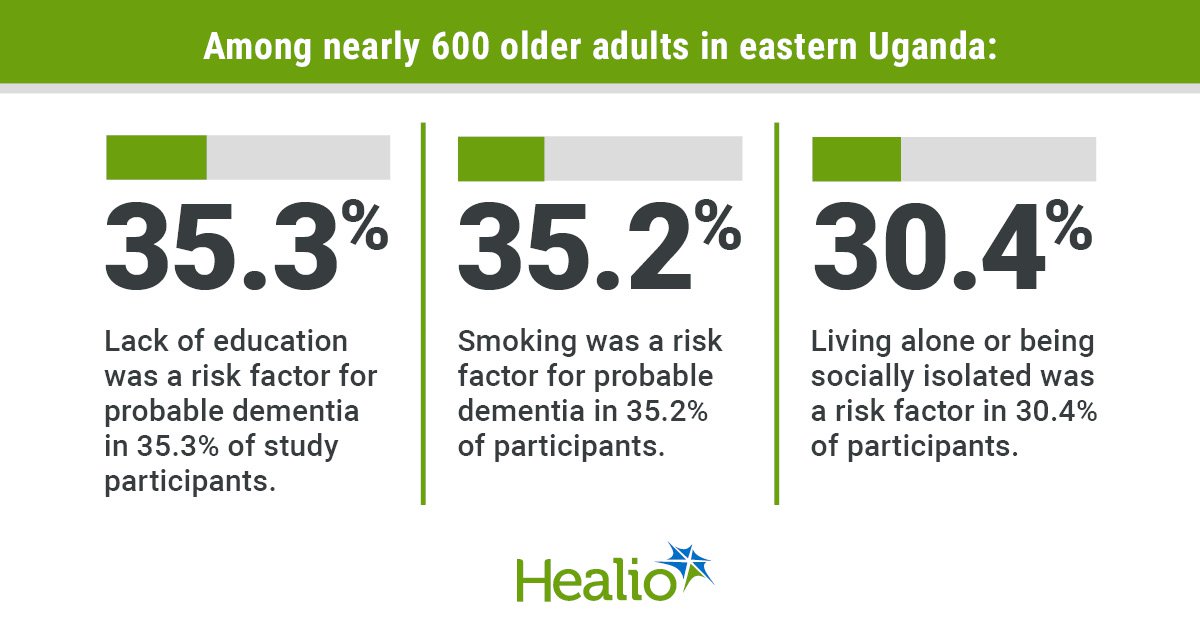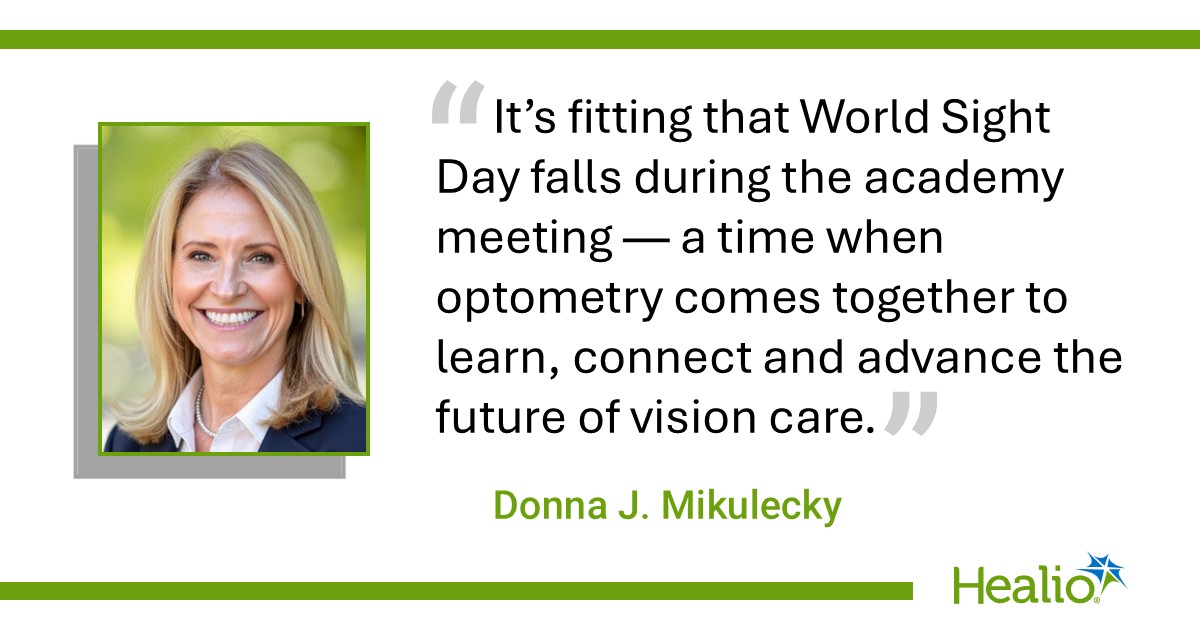September 24, 2025
2 min read
Key takeaways:
- Alcohol use, diabetes and hypertension did not carry significant associations with dementia in the study population.
- The researchers urged similar studies in other parts of the world.
BALTIMORE —Smoking and educational status were the two most significant risk factors for probable dementia among older adults in eastern Uganda, according to a presenter at the American Neurologic Association annual meeting.
“In 2021, there was approximately 357 million people living with dementia worldwide, with approximately 10 million new cases annually,” Marleny Nolasco, BS, associate clinical research coordinator in the department of neurology at the University of North Carolina Chapel Hill School of Medicine, said.

“This burden of dementia disproportionately falls on low- and middle-income countries, where currently 60% of all cases come from, and this number is projected to rise to 71% by 2050,” she continued.
Nolasco and colleagues sought to examine the modifiable risk factors that drive neurocognitive impairment in two rural regions of eastern Uganda (Busla and Namayingo) , in which 5% of the population comprises adults aged 60 years and older.
The rural portion of the region is impacted by substandard health indicators, Nolasco said, including high rates of poverty, disease burden and limited care access. Approximately 60% of the population lives within a 5 km radius of a health center, she noted, all of which increases the vulnerability of the populace for comorbidities like cognitive impairment.
The cross-sectional study was conducted between December 2023 and September 2024 in two parts: door-to-door surveys of 602 residents and their caregivers (55.4% aged 60 to 69 years; 60.2% women) as well as additional on-site screening of participants via the Intervention for Dementia in Elderly Africans (IDEA) cognitive tool. Data collection included a range of demographic information, along with diet, physical condition, education, psychiatric comorbidities and illumination sources.
Four interviewees had incomplete data, with the final analysis set including 598 participants.

Marleny Nolasco
The researchers reported that dementia was probable in 123 participants (21%) overall, with 26.2% probable among women, 12% among men.
Among age groups, the largest percentage of probable dementia was found in 48.3% of those aged 80 years or older, 24.5% in those aged 70 to 79 years and 10.2% for those aged 60 to 69 years.
Further analysis revealed that 26.7% of the study population had moderate-to-severe comorbid depression with 13% having either no depression or minor symptoms.
Data additionally showed that smokers had a higher probable risk for dementia (35.2%) compared with nonsmokers (18.6).
Nolasco and colleagues also found the rate of probable dementia was 35.3% in those with no education and 11.2% of individuals with either primary-school level education or higher; 28.2% for those “formerly married” vs. 9.4% for those currently wed; with respect to BMI, the percentages were 27.3% for those underweight, 20.6% for those with normal BMI and 11.9% for those overweight or obese; and for cohabitational status, 30.4% for those living alone or otherwise socially isolated vs. 10.3% for those not living alone.
Alcohol consumption, diabetes and hypertension “surprisingly” did not carry significant associations with dementia in the study population, Nolasco said.
In addition, those who used kerosene-based illumination sources recorded higher rates of probable dementia vs. those who used electricity, solar, firewood or other methods.
“Understanding the influences of these factors on dementia prevalence is essential for developing culturally competent and appropriate dementia prevention to also intervene specifically in this population,” Nolasco said. “I urge that other researchers do the same in other parts of the world to identify the best ways to find treatments and interventions for these populations.”
For more information:
Marleny Nolasco, BS, can be reached at neurology@healio.com.










